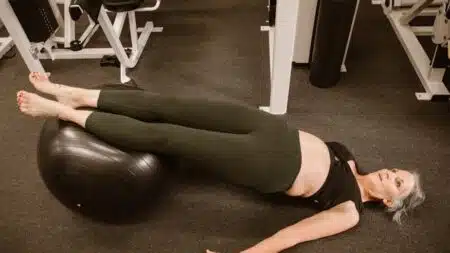For many individuals, embracing their true gender identity and expression brings profound relief, joy and a sense of personal alignment. Gender expression is the outward presentation of gender through behavior, clothing, hairstyles, voice, body characteristics and more. Freely expressing oneself according to internal identity rather than birth-assigned gender is incredibly validating. However, certain gender expression practices like tucking, packing and chest binding, while affirming, can impact pelvic health over time if precautions aren’t taken. This guide explores common gender expression techniques alongside tips to mitigate adverse effects.
Finding freedom in gender self-expression carries immense personal significance. The ability to outwardly present one’s true inner identity through gender expression opens the door to living authentically, courageously, and with self-acceptance. In an era of increasing awareness and support for expanding gender diversity, many find newfound confidence in presenting their gender identity visibly. Still, navigating unique challenges around healthy gender expression practices remains important.
Tucking Technique: Guidance to Maintain Pelvic Health
Tucking aims to create a smooth, flat-fronted genital appearance by positioning the testes up into the inguinal canals flanking the hips while the penis tucks backwards between the legs. Tight garments, tape, or specialty gaffs often secure tucked anatomy in place for an extended period. While tucking provides an affirming and validating look, frequent or prolonged tucking sessions may trigger issues:
- Dehydration, urinary tract infections and voiding dysfunction from restricted fluid intake
- Skin irritation, wounds, rashes or fungal infections around genitals
- Chronic pelvic pain, muscle dysfunction and pelvic floor issues
- Negative impacts to bowel function from pressure
To tuck safely minimizing risks, follow sensible precautions:
- Hydrate regularly and urinate frequently, avoiding excessive fluid restriction
- Periodically loosen tucking tape, garments or gaffs to restore circulation
- Consult a pelvic floor physical therapist promptly if any pain, irritation or issues arise
- Avoid wrapping tape that could dangerously restrict circulation or cause skin damage
Prioritizing Comfort with Packing
Packing creates the visual appearance of a penile bulge and contour under clothing via a prosthetic penis, phallic object or padding in the underwear or garment’s front. While gender-affirming, constant friction, moisture and improper packing hygiene may trigger issues like chafing, skin irritation, rashes, fungal or bacterial infections and generalized discomfort.
Key practices for healthy, comfortable packing include:
- Maintaining extremely rigorous hygiene and cleanliness protocols
- Minimizing continuous wear time and giving skin regular breaks from packing to prevent irritation
- Prioritizing breathable, well-fitted prosthetics and moisture-wicking fabrics
- Sleeping unpacked to allow extended aeration of genital skin
- Promptly addressing any rashes, irritation or skin issues medically
Chest Binding Basics for Body and Respiratory Health
Chest binding involves wrapping material like elastic binders, compression tops, or strips of fabric tightly around the chest to minimize breast protrusion and curves, creating a flatter, more masculine-presenting chest contour. Many who wish to bind wear binders for extended periods throughout the day, but improper or excessive binding can result in:
- Poor posture leading to chronic back and shoulder pain
- Rib bruising, fractured ribs or musculoskeletal injuries from overly aggressive compression
- Shortness of breath, decreased lung expansion and respiratory distress
- Digestive issues like heartburn/GERD, constipation or other bowel dysfunction
Following smart practices for healthy safe binding:
- Limiting total binding time to 8-12 hours daily maximum, with periodic breaks
- Applying binders against clean, completely dry skin to prevent fungal/bacterial over-growth
- Continuously prioritizing comfort and ease of breathing over aggressive compression
- Taking regular breaks from binding to allow full breath expansion
- Promptly seeking medical care if any pain, breathing difficulties or injuries occur
The Path to Holistic Self-Care and Body Alignment
Tucking, packing and binding are hugely validating and liberating techniques for aligning gender appearance, yet some may find permanent interventions like gender-affirming surgery ultimately better serve their needs for physical and mental wellness long-term. The key is maintaining open, non-judgmental communication with medical professionals to make informed decisions providing both validation and health.
For those practicing tucking, packing or binding routinely, care coordination with physical therapists specializing in the pelvic floor is incredibly valuable. Pelvic PTs create customized holistic care plans helping individuals find empowering ways to affirm identity while preventing unintended pelvic floor dysfunction, prolapse and other issues imperiling overall wellbeing.
Most importantly, make self-care and compassionate body attunement a priority. Know that you deserve to live authentically while honoring the miracle of your physical form. Listen closely to your body’s signals. With patience and creativity, you can find balance and harmony between personal gender expression and sustainable physiological integrity.
Gender Expression and Identity Across the Lifespan
Embracing one’s authentic gender identity and finding comfortable, fulfilling ways to express it are core pieces of the human experience. However, gender expression evolves over time as bodies and perspectives change. Some long to make their outward appearance closely match inner identity. Others embrace fluidity or gender non-conformity. There’s no single right way – the key is respecting individuality.
Gender expression during puberty is especially complex as youths navigate dramatic bodily changes. Expert support in exploring identity safely and aligning environment is crucial. For older adults, changing physical abilities may require new solutions for gender expression and validation. Wherever you are on life’s journey, self-acceptance, community support and resourceful self-expression are cornerstones of resilient gender wellbeing.
Crafting Personalized Solutions for Healthy Expression
A variety of innovative gender expression aids and products are emerging to help individuals uphold pelvic and overall health when tucking, packing, binding or engaging other practices. Lightweight prosthetics, breathable chest binders, tailored gaffs and more provide comfortable, body-positive options.
Customized solutions offer incredible potential for both sense of self and bodily integrity: compression shorts preventing excess genital taping, insertable packing prosthetics minimizing genital friction and pelvic floor support alleviating binding discomforts. Resources like physical therapy and constructive community connections empower individuals to find creative, health-conscious paths tailored to their unique anatomy and aspirations.
With openness to innovation and a mindset of holistic self-care, those exploring gender expression have tremendous power to honor physiological wellbeing alongside validating self-actualization.
Fluidity and Integration Across Identities
While health precautions are prudent for tucking, packing, binding and other gender expression efforts, these practices need not be a source of guilt or shame. There’s no one rulebook for healthy gender expression – only deep self-knowledge, patience, resourcefulness and integration of wellbeing. Like any exploration of the self, the journey of gender identity and expression is one marked by fluidity, change and moments of profound insight.
At times, certain practices requiring modest compromise with ideals may feel worthwhile. Gradual, incremental progress is perfectly fine. The goal isn’t perpetual perfect adherence to recommendations, but rather harmonizing healthful, holistic practices sustainably over time. With compassion and openness, pathways can always be re-envisioned. Gender exploration is fertile ground for empowerment and self-care in equal measure.
By maintaining thoughtful awareness of interlinked physical and emotional landscapes, self-advocates can redefine boundaries and find balance between physiological needs and deeply personal identity. Herein lies the freedom of integration – honoring core truths within a vibrant spectrum of gender expression.



